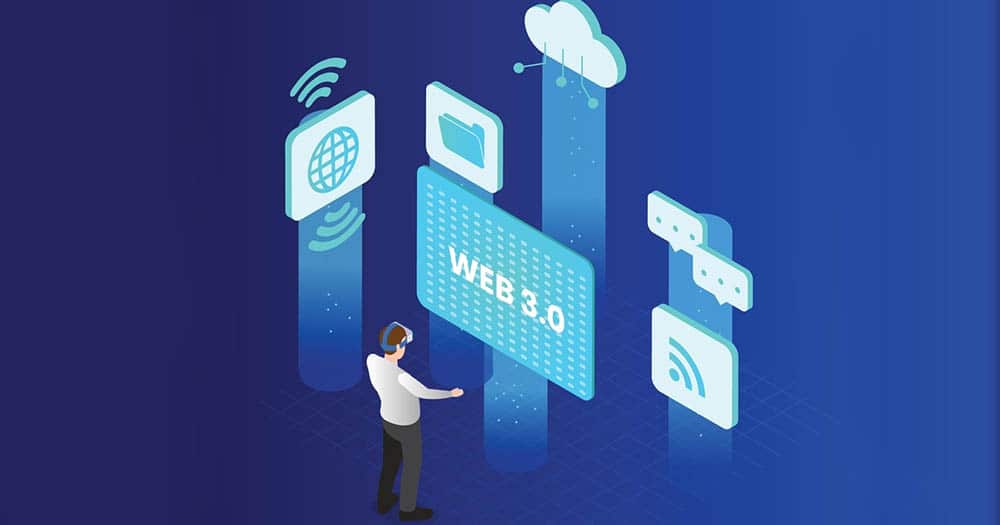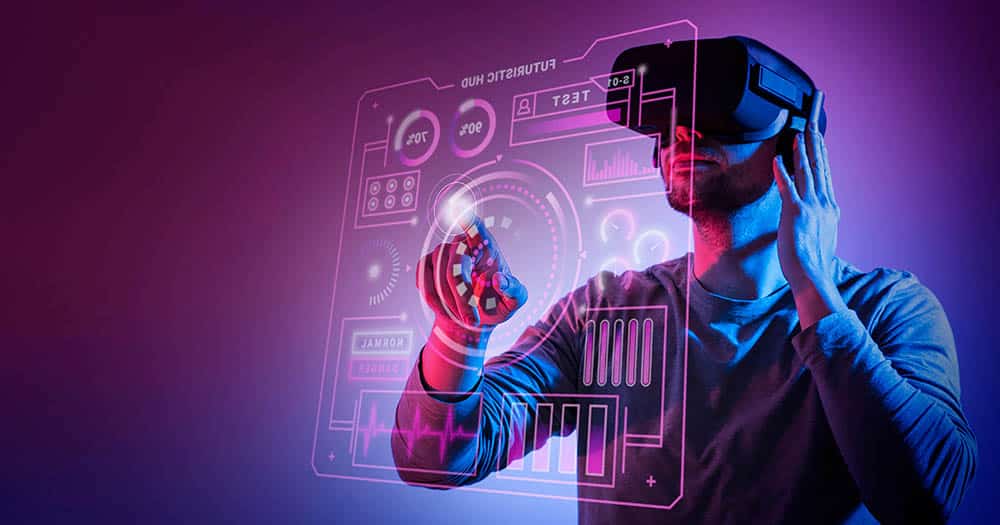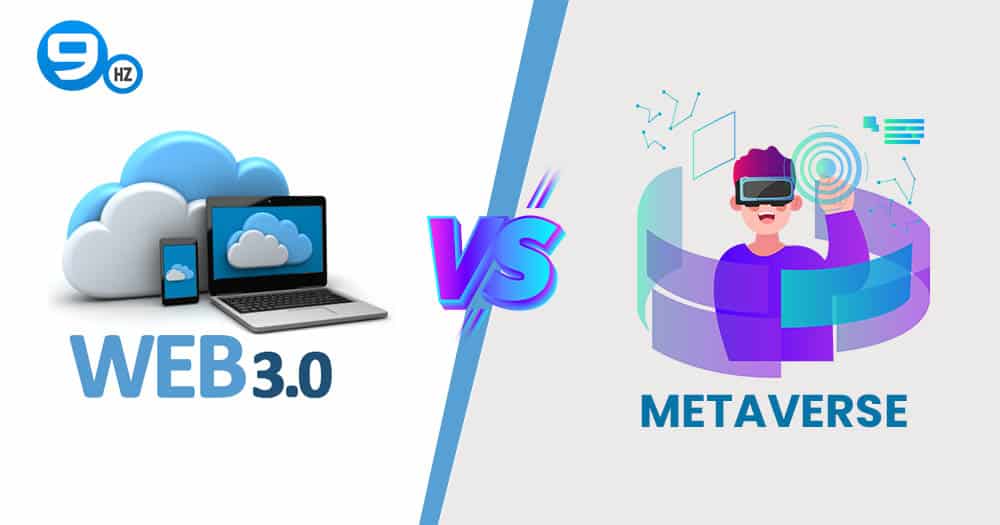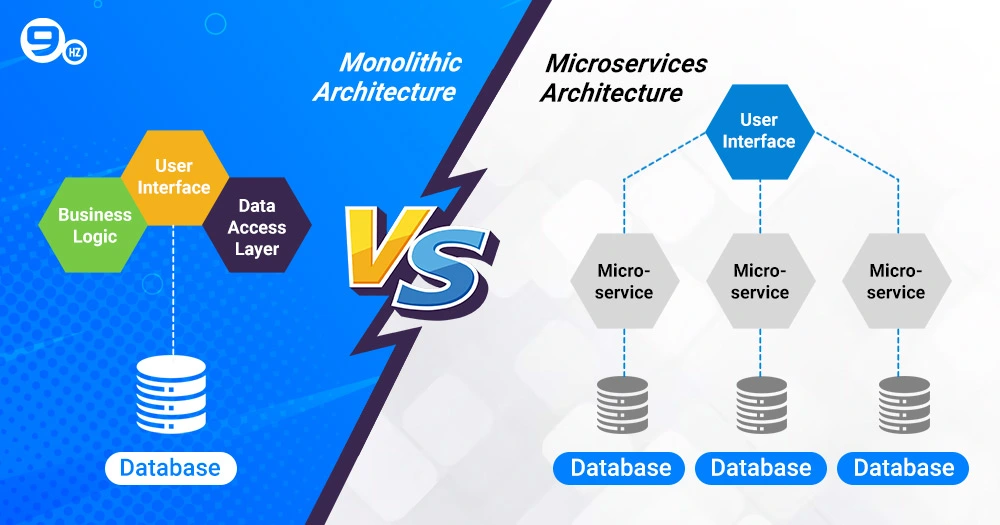The introduction of new technologies to the Internet has altered the prepositions and raised concerns about the Internet’s usability becoming a major issue. Therefore, technologies are causing a stir and further comparisons between web 3.0 Vs Metaverse is raging. Which technology trend would shape the Internet of the future? Or which technological way is secure to access the Internet through the Metaverse or web 3.0?
These questions are popping up everywhere, as many organizations have recently decided to enter the Metaverse development services with their applications, following some large organizations’ adoption of the technology. Today, the global population is still struggling to familiarize itself with the fundamentals of available technologies such as the Metaverse and the critical implications of Web 3.0.
Both technologies and the future of connectivity impact and reflect on the differences between them and their implications for the future of digital technologies. This article discusses the distinction between web 3.0 and the Metaverse and how they complement each other perfectly.
What is Web 3.0?

Web 3.0 is the next version of the Internet. It is regarded as a tool for decentralization and the future of governance, data management, and financial transactions. Before we delve deeper into Web 3.0, we must first explore its origins.
Web 3.0 can be traced back to Web 1.0, the Internet’s inception from the early 1990s to the early 2000s. When most people think of Web 1.0, they envision dial-up internet access on a large, box-sized PC monitor at home. The era of first-generation internet browsers like Netscape, static desktop web pages crammed with information, and the first wave of e-commerce interest.
The years following Web 1.0 have been labeled as Web 2.0 (popularised by tech advocate Tim O’Reilly) from roughly 2005 to the present. In essence, the Internet moved from the home to the palm of your hand, allowing you to access information anywhere. It has been the predominant form of the Internet for the past 15 to 20 years. Mobile devices, social media, cloud computing, and SaaS were the primary characteristics that defined Web 2.0. (software-as-a-service). Other characteristics include immersive experience, UGC (user-generated content), e-commerce, and the “sharing economy.”
Furthermore, the Web 2.0 era saw the rise of highly centralized tech companies such as Facebook and Google, whose products became popular and almost indispensable tools in our daily lives. In exchange for “free” use of products, we allowed these companies to control and monetize our data to the point where we became the product. Web 3.0 proposes to return ownership of that data to the users.
Hire Certified Web 3.0 Developers
Request A Free Quote
The Development and Characteristics of Web 3.0
Web 3.0 has arguably been in development since creating decentralized digital assets and the first blockchain protocol–Bitcoin–in 2008. The Web 3.0 era may have begun in late 2020 or early 2021, when cryptocurrencies, NFTs, and the Metaverse became widely available.
Web 3.0 is defined by three primary characteristics:
It is democratized
Web 3.0 will be built on a decentralized blockchain protocol with no centralized ownership of content, services, or platforms. It implies that web 3.0 content creators will be fairly compensated and that there will be less red tape surrounding content access.
It is semantic
The semantic web is not the same as Web 3.0, but it is an underlying technology for the Internet’s third new generation. The semantic web would enable multiple internet pages to be correlated using a semantic protocol, allowing the relationships between pages to be visible, indexed, and searchable.
It may be spatial
While Web 1.0 and 2.0 provide two-dimensional experiences, Web 3.0 may be immersive and provide spatial experiences similar to those found in the real world. The spatially interactive will be added to the digital information layer, which will use sensory triggers and controls such as voice, gesture, biometric commands, and others.
This characteristic connects Web 3.0 vs Metaverse, but the two technologies are distinct. Now let’s take a look at the Metaverse, then delve into the key differences and similarities.
What Is the Metaverse?

The Metaverse is a three-dimensional immersive environment powered by augmented, virtual, and mixed reality that allows users to interact with 3D objects.
Its goal is to create a replica of the real world, complete with designated areas for work, play, and social activities. All of these virtual spaces would be interoperable, and the Metaverse would be hosted on the blockchain so that no single entity could control it.
The Metaverse is currently being developed by companies such as Decentraland, The Sandbox, and Meta Platforms Inc. Still, it has yet to see truly widespread adoption on par with the Internet. Here is a complete list of the best metaverse companies worldwide.
Web 3.0 vs Metaverse: Key Differences
| Criteria | Web 3.0 | Metaverse |
|---|---|---|
| Definition | A new iteration of the internet focused on creating a decentralized web, where users can own and control the content and assets they create.
|
A digital space that would blend virtually augmented physical reality with physically persistent virtual spaces. |
| Underlying Technology | ● Blockchain and cryptocurrencies ● DAOs ● NFTs ● Defi |
● Connectivity technologies ● Human interface ● Decentralization technologies ● Experiences ● Creator economy |
| Scope of application | Applicable throughout the web. | Still under development, and potential areas of application are still under scrutiny. |
1. Intrinsic immersiveness
The definitions of the Metaverse and web 3.0 are, of course, the first point of comparison. The Metaverse is a virtual reality computer domain where you can interact with three-dimensional objects. Users will be able to interact with other users and virtual items in the Metaverse using virtual reality goggles. Web 3.0, on the other hand, represents a significant advancement in the management of digital assets and online services. Web 3.0 allows the internet user to create, own, and monetize their content. As a result, web 3.0 is a vision for the Internet’s future generation, in which users have control over their inventions.
2. Underlying technology
The underlying technology is the next critical component in both web 3.0 and metaverse comparisons. The Metaverse contains several critical technologies that support the entire ecosystem. To build the Metaverse, you’ll need connection, interfaces, decentralization, a creator economy, experiences, and supporting technology. Web 3.0’s goal was to create a decentralized web based solely on blockchain and cryptocurrency. Blockchain, governed by a decentralized network of computers, allows users to interact with online services. Furthermore, web 3.0 can take advantage of public blockchain functionality to provide open, access to anyone with an internet connection.
3. Use cases
Another significant distinction between web 3.0 and Metaverse is the potential applications. The Metaverse is a new dimension that combines movies, entertainment, video games, education, simulation-based training, and social networks. However, all of these metaverse applications are still in the works. As a result, it’s too early to predict that the Metaverse will be able to reflect virtually all real-world activity accurately. Web 3.0 is a specification for the Internet’s next version. You can think of it as a set of rules that everyone who uses the Internet must follow. As a result, web 3.0 will apply to the entire web rather than being limited to specialized apps.
4. Stakeholders developing it
Developers will create Web 3.0 using an entirely open-source codebase. Just as no single entity built the current Internet, it will be impossible to attribute the development of Web 3.0 to a single person. However, the Metaverse will rely on coordinated efforts from a few companies for development, at least in the early stages. Once the platform is in place, and the tools are democratized, the code base may eventually become open-sourced.
5. The current state of availability
Even though it’s version 3.0, the web is still the web. It’s a virtual location that will remain so. The Metaverse is intended to be a hybrid of virtual and actual worlds, using technologies such as VR and AR. Facebook recently announced that it would focus on the Metaverse. They are achieving their objectives through the use of virtual reality. However, augmented reality is the future, while games allow you to escape the real world. AR’s applications can be found in various fields, including medicine and education.
Hire Certified Metaverse Developers
Request A Free Quote
Web 3.0 Vs Metaverse: Similarities
Despite these five distinctions, Web 3.0 and the Metaverse are interrelated, and they are both parts of an ongoing revolution in how we interact with digital technology.
We’ve highlighted the similarities below for your convenience:
In a technological sense, many of the advancements made with blockchain create the same common ground in both terminologies. Every new blockchain concept and solution is assessed as a potential module for integrating the Web 3.0 engine that will power Metaverse goods and services.
They are inseparably linked to each other. The Metaverse will continue to exist in the surface and deep webs, even though Web 3.0 is still frequently referred to as “decentralised”; however, the Metaverse will remain “centralized” in terms of social media controlling platforms.
The Internet and open, trustless, and permissionless networks provide free access to the digital world. They will be both decentralized and open to the general public.
Both are advanced technologies that will evolve. The technologies will make use of artificial intelligence and a sophisticated user interface.
They’re focused on next-generation internet technologies and changing the way people share content online. Through IoT, both technologies assist consumers in entering the virtual and physical worlds with decentralized solutions.
They both rely on HTTP 2.0 and cutting-edge web technology. The patterns employed rely heavily on distributed computing. Both rely on widespread user acceptability.
Wrapping-Up: Difference Between Web 3.0 and Metaverse
Now we have come to an end, and we can conclude through the post that Metaverse vs Web 3.0 has a long way to go. There are numerous developments required in the Metaverse, and Web 3.0 is rooting perfectly in the users’ minds. We hope you found this post on Metaverse vs Web 3.0 interesting.
Frequently Asked Questions
Q. Is Metaverse A Web 3.0?
Metaverse and Web 3.0 are not the same things. Metaverse is related to how the Internet will integrate with daily lives, while Web 3.0 is the future Internet.
Q. What Will Replace The Internet?
There is no surety about it, but it is considered that the Metaverse, the new virtual worlds of augmented and virtual reality, may replace the Internet.
Great Together!









